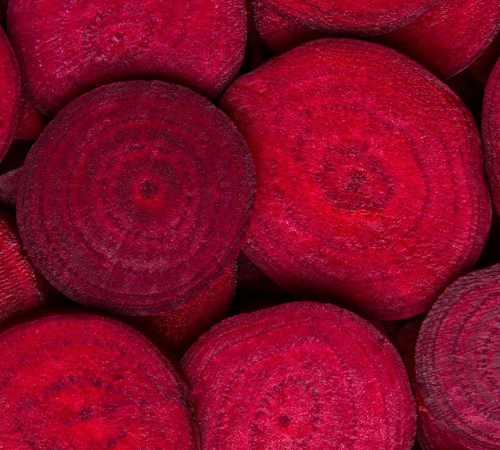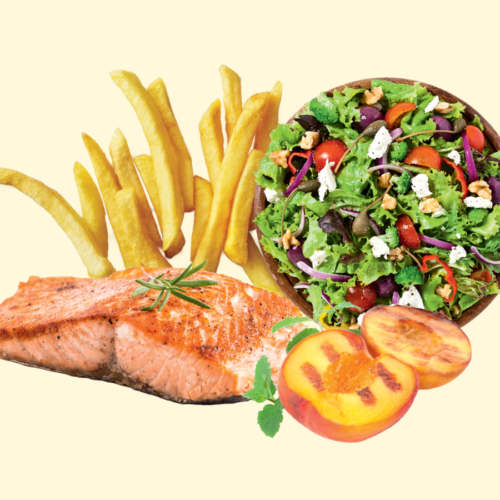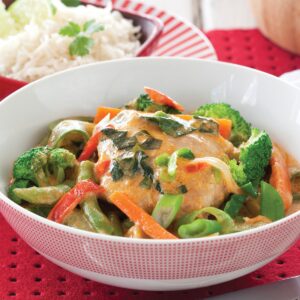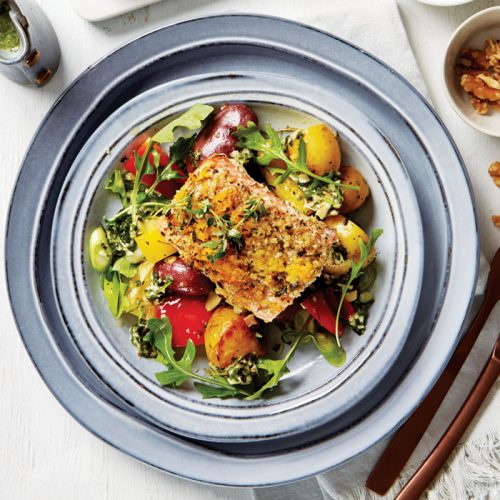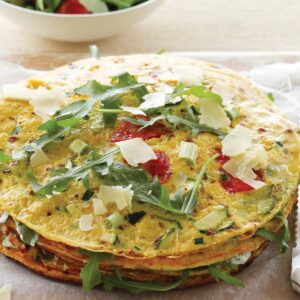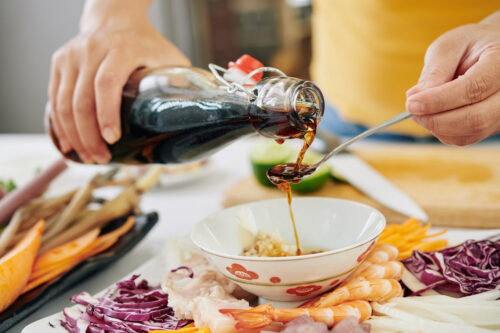
Store-bought stir-fry sauces are handy, but many have unhealthy amounts of sodium. HFG helps you shake off the salt.
Ready-made Asian sauces are a quick and easy way to add flavour to midweek meals. Unfortunately, they can be excessively high in sodium. Too much salt can raise your blood pressure, which in turn increases your risk of heart disease. Read on to discover ways to rein in the salt (and sugar), but still wok your world.
Watch out for hidden…
Salt (sodium)
Store-bought Asian sauces are particularly high in sodium, which is not good for your heart. National dietary guidelines advise a maximum daily intake of 2000mg sodium — and some sauces have more than triple that in just 100ml, which is less than half a cup! To choose products with lower sodium, compare brands by reading the nutrition information panel on the back of the bottle, and opt for a product that has less than 1000mg sodium per 100g.
Sugar
To get that trademark balance of sweet and salty, many Asian sauces contain added sugar. Added sugar can come in many forms, and often appears in the ingredients list on nutrition labels as palm sugar, fructose and sucrose, among other names. For a healthier buy, choose products that contain less than 40g sugar per 100g.
What sauces are on the shelf
Pantry staples
Soy sauce, kecap manis and fish sauce are Asian cooking staples. They are incredibly salty, so only use tiny amounts. A tablespoon of soy sauce, for example, has around 1400mg sodium, which contains 70 per cent of your daily recommended maximum. Rice vinegar, mirin (Japanese sweet cooking wine) and cooking sake are flavourful staples that aren’t as salty, so can be used more liberally.
Stir Fried Sauces
Pre-made bottled sauces such as oyster, teriyaki and black bean can also be very high in sodium. What’s more, they can be super sweet, with some containing almost 50 per cent sugar. Use these stir-fry sauces sparingly or water them down to dilute them
Curry pastes
Indian-style store-bought curry pastes are made with punchy ingredients like garlic, shrimp paste, spices and, you guessed it, plenty of salt, so only use in small amounts. If you have the time, making your own curry paste, where you can control the amount of salt, is a wise idea.
Condiments
Try adding a little no-added-salt chilli oil or a dollop of Japanese-style mayonnaise for a healthier accompaniment. Avoid sweet or spicy chilli sauces, as these can be high in sodium and/or sugar.
Savour healthier flavour
For a lighter Asian-style meal, create salt- and sugar-free flavour with:
- Fresh herbs such as coriander, Thai basil, lemongrass, mint & kafir lime leaves
- Spices such as cloves, cumin, five spice, cinnamon, turmeric & star anise
- Aromatics such as garlic, ginger, leeks, spring onion, fresh chilli & galangal.
Article sources and references
- Australian Dietary Guidelines. Last accessed April 2022.https://www.eatforhealth.gov.au/sites/default/files/files/the_guidelines/n55_australian_dietary_guidelines.pdf
www.healthyfood.com





